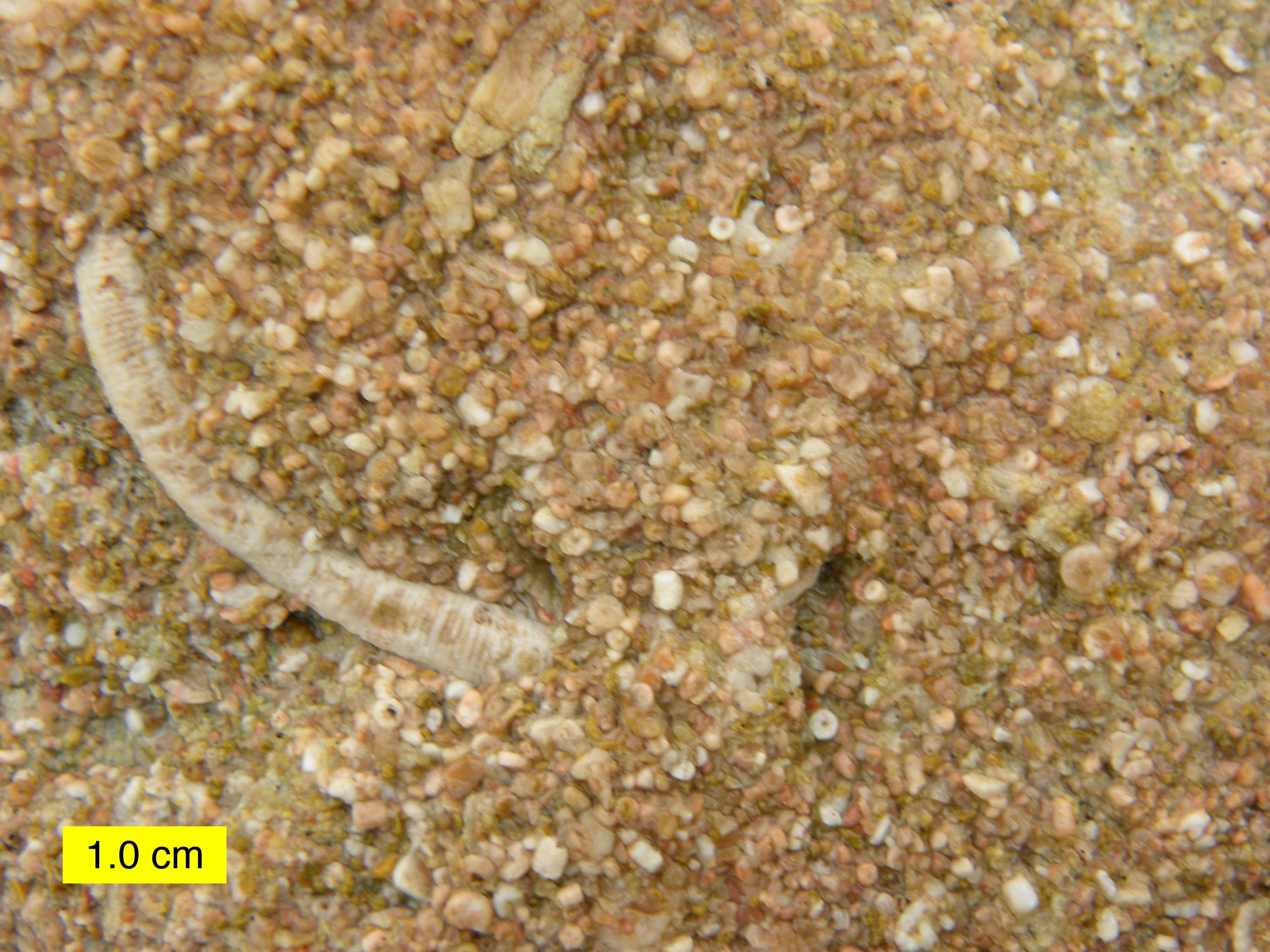|
Floatstone
Floatstone is a type of carbonate rock. The original Dunham classification (Dunham, 1962) of limestone Limestone ( calcium carbonate ) is a type of carbonate sedimentary rock which is the main source of the material lime. It is composed mostly of the minerals calcite and aragonite, which are different crystal forms of . Limestone forms whe ...s did not consider the separate classification of coarse grained carbonate lithologies. In an attempt to rectify this, Embry & Klovan (1971Embry, A.F. and Klovan, J.E. (1971) A Late Devonian reef tract on Northeastern Banks Island, NWT. Bull. Can. Pet. Geol., 19, 730–781.) introduced the terms rudstone (grain supported) and floatstone (matrix supported) for coarse-grained allochthonous limestones. This definition of a floatstone was most recently clarified as "a carbonate-dominated rock where more than 10% of the volume is grains larger than 2 mm and the fabric is supported by the component that is 2 mm and smaller". References ... [...More Info...] [...Related Items...] OR: [Wikipedia] [Google] [Baidu] |
Dunham Classification
The Dunham classification system for carbonate sedimentary rocks Sedimentary rocks are types of rock that are formed by the accumulation or deposition of mineral or organic particles at Earth's surface, followed by cementation. Sedimentation is the collective name for processes that cause these particles t ... was originally devised by Robert J. Dunham in 1962, and subsequently modified by Embry and Klovan in 1971 to include coarse-grained limestones and sediments that had been organically bound at the time of Deposition (geology), deposition. The ''modified Dunham Classification'' has subsequently become the most widely employed system for the classification of carbonate sedimentary rocks with 89% of workers currently adopting this system over the alternative Folk classification, Folk classification scheme History Original classification Robert J. Dunham published his classification system for limestone in 1962. The original Dunham classification system was developed in ... [...More Info...] [...Related Items...] OR: [Wikipedia] [Google] [Baidu] |
Limestone
Limestone ( calcium carbonate ) is a type of carbonate sedimentary rock which is the main source of the material lime. It is composed mostly of the minerals calcite and aragonite, which are different crystal forms of . Limestone forms when these minerals precipitate out of water containing dissolved calcium. This can take place through both biological and nonbiological processes, though biological processes, such as the accumulation of corals and shells in the sea, have likely been more important for the last 540 million years. Limestone often contains fossils which provide scientists with information on ancient environments and on the evolution of life. About 20% to 25% of sedimentary rock is carbonate rock, and most of this is limestone. The remaining carbonate rock is mostly dolomite, a closely related rock, which contains a high percentage of the mineral dolomite, . ''Magnesian limestone'' is an obsolete and poorly-defined term used variously for dolomite, for limes ... [...More Info...] [...Related Items...] OR: [Wikipedia] [Google] [Baidu] |
5 X2 PPL
5 (five) is a number, numeral and digit. It is the natural number, and cardinal number, following 4 and preceding 6, and is a prime number. It has attained significance throughout history in part because typical humans have five digits on each hand. In mathematics 5 is the third smallest prime number, and the second super-prime. It is the first safe prime, the first good prime, the first balanced prime, and the first of three known Wilson primes. Five is the second Fermat prime and the third Mersenne prime exponent, as well as the third Catalan number, and the third Sophie Germain prime. Notably, 5 is equal to the sum of the ''only'' consecutive primes, 2 + 3, and is the only number that is part of more than one pair of twin primes, ( 3, 5) and (5, 7). It is also a sexy prime with the fifth prime number and first prime repunit, 11. Five is the third factorial prime, an alternating factorial, and an Eisenstein prime with no imaginary part and real part of the form 3p ... [...More Info...] [...Related Items...] OR: [Wikipedia] [Google] [Baidu] |
Carbonate
A carbonate is a salt of carbonic acid (H2CO3), characterized by the presence of the carbonate ion, a polyatomic ion with the formula . The word ''carbonate'' may also refer to a carbonate ester, an organic compound containing the carbonate group C(=O)(O–)2. The term is also used as a verb, to describe carbonation: the process of raising the concentrations of carbonate and bicarbonate ions in water to produce carbonated water and other carbonated beverageseither by the addition of carbon dioxide gas under pressure or by dissolving carbonate or bicarbonate salts into the water. In geology and mineralogy, the term "carbonate" can refer both to carbonate minerals and carbonate rock (which is made of chiefly carbonate minerals), and both are dominated by the carbonate ion, . Carbonate minerals are extremely varied and ubiquitous in chemically precipitated sedimentary rock. The most common are calcite or calcium carbonate, CaCO3, the chief constituent of limestone (as well a ... [...More Info...] [...Related Items...] OR: [Wikipedia] [Google] [Baidu] |



